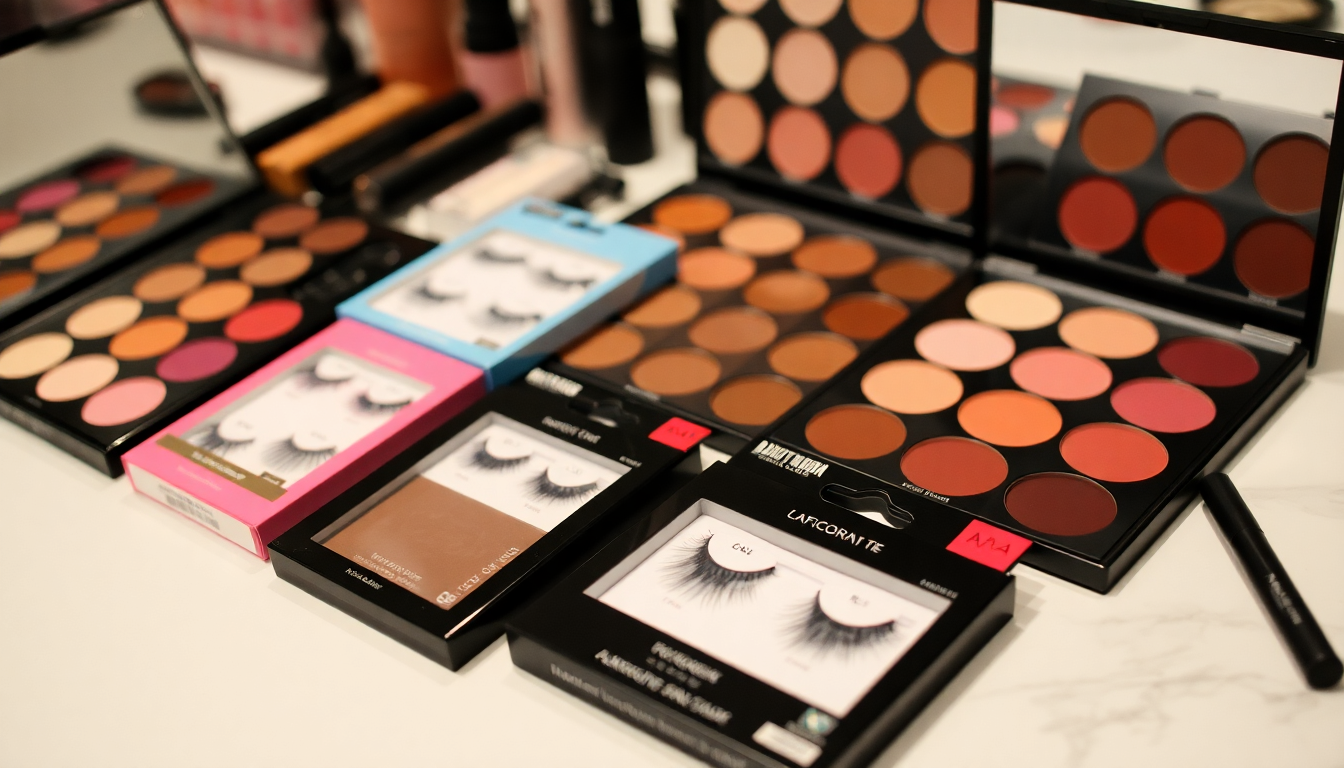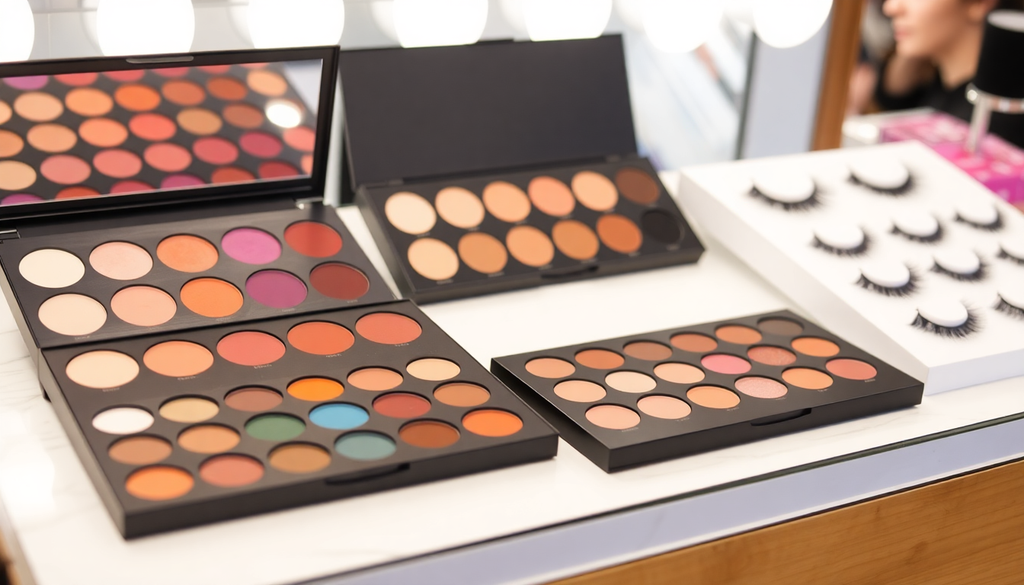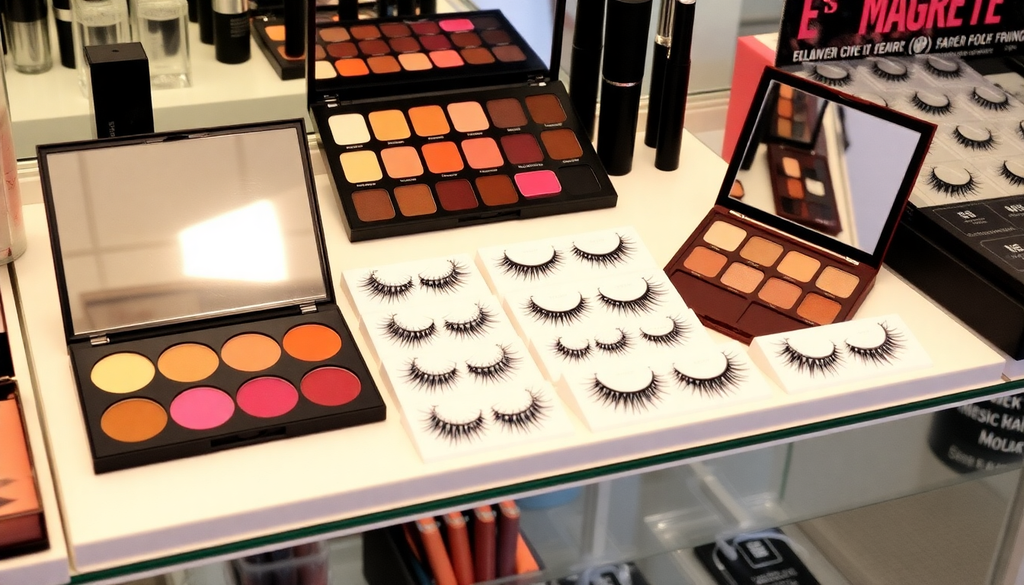
Launching Your Makeup Brand in 2025: Essential Insights on Private Label Cosmetics, Import Policies, and Marketing Strategies for Eyelash Packaging and Eyeshadow Palettes
Introduction
As the beauty industry continues to flourish, launching your makeup brand in 2025 offers immense opportunities for aspiring entrepreneurs. With the right strategies and insights, you can navigate the complexities of private label cosmetics, import policies, and effective marketing techniques, particularly for products like eyelash packaging and eyeshadow palettes. This comprehensive guide will provide you with essential information to help you successfully enter the competitive makeup market.
Understanding Private Label Cosmetics
Private label cosmetics allow you to create a unique brand without the need for extensive manufacturing processes. This model is particularly appealing for new entrepreneurs looking to make their mark in the industry. Here are the key steps to consider:
- Finding a Manufacturer: Research reputable manufacturers that specialize in private label cosmetics. Look for manufacturers who have a solid track record and can provide references. Ensure they meet quality and safety standards, and ask about their certifications, such as Good Manufacturing Practices (GMP).
- Customization: Work with the manufacturer to customize formulations, packaging, and branding to reflect your vision. Consider aspects such as color, texture, and fragrance that align with your brand identity.
- Regulatory Compliance: Familiarize yourself with cosmetic regulations in your target market to ensure compliance. Each country has different regulations regarding ingredients, safety testing, and labeling. This knowledge will help you avoid legal issues down the line.
- Creating Unique Formulations: Consider developing unique formulations that stand out in the market. This could involve using innovative ingredients, focusing on specific skin types, or catering to niche markets.
Navigating Import Policies
When launching a makeup brand, understanding import policies is crucial, especially if you're sourcing products from abroad. Key considerations include:
- Import Licenses: Check if you need any import licenses for cosmetics in your country. Regulations vary, and certain products may require special permits.
- Tariffs and Duties: Be aware of any tariffs or duties that may apply when importing products. This can significantly impact your overall cost structure.
- Documentation: Ensure that all necessary documentation, such as customs declarations and product safety certificates, are in order. Proper documentation can help avoid delays and fines.
- Quality Control: Implement a quality control process for imported products. Conduct random testing to ensure products meet your standards before they reach customers.
Cosmetics Labelling Information
Cosmetic labeling is vital for compliance and consumer trust. Here are important labeling requirements:
- Ingredients List: Clearly list all ingredients in descending order of predominance. Transparency in ingredients is crucial for customer trust.
- Product Claims: Ensure that any claims made (e.g., "hypoallergenic," "non-comedogenic") are supported by evidence. Misleading claims can lead to legal issues and damage your brand's reputation.
- Country of Origin: Indicate where the product was manufactured. Consumers are increasingly interested in knowing the origin of their products.
- Expiration Dates: Include expiration or best before dates on products to ensure safety and compliance.
Setting Up Your Makeup Online Store
In today's digital age, an online presence is essential for your makeup brand. Follow these steps:
- Choose an E-commerce Platform: Select a user-friendly platform such as Shopify, WooCommerce, or BigCommerce. These platforms offer various features to help you manage your store efficiently.
- Design Your Store: Create a visually appealing website that reflects your brand identity. Invest in high-quality images and user-friendly navigation to enhance the shopping experience.
- Payment Gateways: Set up secure payment options for your customers. Popular options include PayPal, Stripe, and credit card processors.
- Mobile Optimization: Ensure your website is mobile-friendly, as a significant portion of online shopping occurs on mobile devices.
- SEO Optimization: Implement SEO best practices to enhance your online visibility. Use relevant keywords, optimize your product descriptions, and create engaging blog content to attract organic traffic.
Marketing Strategies for Eyelash Packaging and Eyeshadow Palettes
Effective marketing strategies can set your makeup brand apart. Here are some tips:
- Social Media Marketing: Utilize platforms like Instagram and TikTok to showcase your products through engaging content and collaborations with influencers. Create visually appealing posts, stories, and reels that highlight your products in use.
- Email Marketing: Build a mailing list to keep your customers informed about new launches, promotions, and beauty tips. Offer incentives, such as discounts or exclusive content, to encourage sign-ups.
- Content Marketing: Create valuable content around makeup tutorials, tips, and trends to attract and retain customers. Consider starting a blog or a YouTube channel to share your expertise and connect with your audience.
- Influencer Collaborations: Partner with beauty influencers to reach a wider audience. Choose influencers whose values align with your brand for authentic promotion.
- Participate in Beauty Events: Attend beauty trade shows and events to network with industry professionals, showcase your products, and gain exposure.
Building a Brand Identity
Establishing a strong brand identity is crucial to differentiate your makeup brand from competitors. Consider the following elements:
- Brand Name: Choose a memorable and meaningful name that reflects your brand's values and mission.
- Logo Design: Invest in a professional logo design that resonates with your target audience and aligns with your brand aesthetic.
- Brand Voice: Define your brand voice and messaging. Consistency in communication helps build trust and loyalty.
- Packaging Design: Create attractive and functional packaging that enhances the customer experience and reinforces your brand identity.
Customer Engagement and Feedback
Engaging with your customers and gathering feedback is essential for growth. Here are some strategies:
- Encourage Reviews: Ask customers to leave reviews on your website and social media. Positive reviews can enhance credibility and attract new customers.
- Customer Surveys: Conduct surveys to gather insights about customer preferences, product performance, and areas for improvement.
- Respond to Inquiries: Make it a priority to respond promptly to customer inquiries and concerns. Excellent customer service can lead to repeat business and referrals.
Conclusion
Launching your makeup brand in 2025 requires careful planning and execution. By understanding private label cosmetics, navigating import policies, ensuring proper labeling, setting up an online store, and implementing effective marketing strategies, you can position your brand for success in the competitive beauty market. Remember that building a successful makeup brand is a journey that involves continuous learning, adaptation, and a passion for beauty. Embrace the challenges and celebrate your milestones as you work towards establishing a brand that resonates with customers and stands the test of time.
Delen

Navigating the Makeup Business Landscape: A Comprehensive Guide to Launching Your Private Label Brand with Custom Eyeshadow Palettes and Magnetic Lashes in 2025



